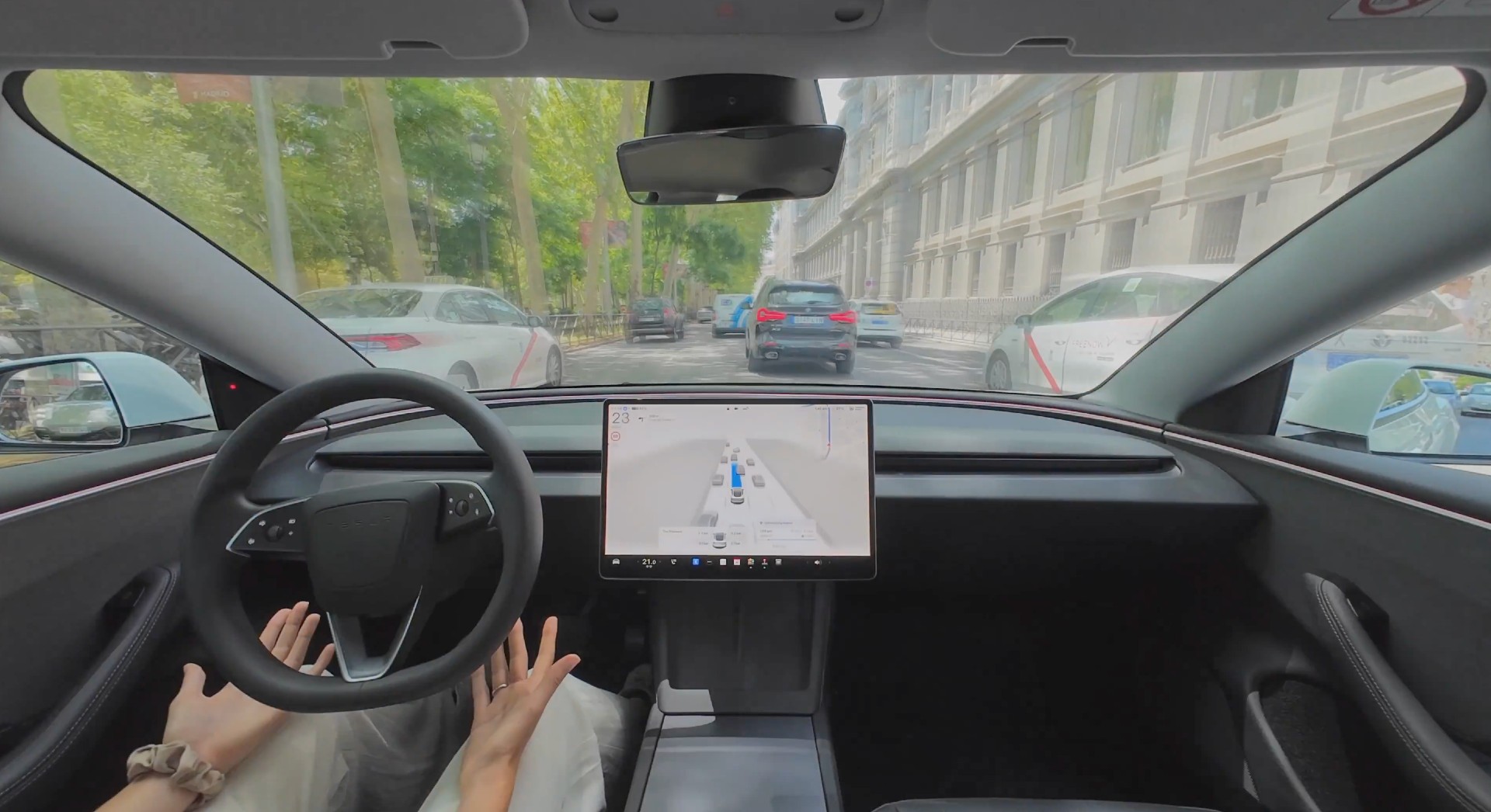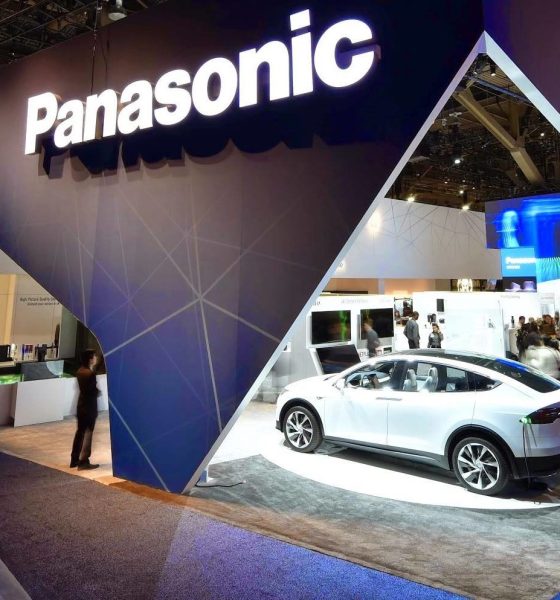Tesla’s battery partner and long-time supporter, Panasonic, just turned 100 years old. Entrepreneur’s Lydia Belanger reports that throughout the last century, “Panasonic has pivoted regularly, expanded globally and today continues to look toward the future of technology, including teaming up with Tesla.” Panasonic’s financial investments in Tesla aren’t the only support it provides — its rich history is full of lessons that Tesla can learn from in order to successfully grow.
Back in 1918, a young 23-year-old, Konosuke Matsushita, founded the company now known as Panasonic. His design for a new kind of light socket launched the new Japanese business. And early on, “Matsushita was ahead of his time as far as his management approach. When the company was 2 years old and had 28 employees, he formed what he called the ‘Hoichi Kai,’ which translates to ‘one-step society.’ It brought employees together to play sports and participate in other recreational activities.”
Matsushita also had a penchant for generosity and transparency. Belanger reports, “Matsushita’s philosophy was one of trust, and he decided to share trade secrets even with new employees to build trust at all levels of the organization. By the end of 1922, the company had 50 employees and a new factory.”
Matsushita also got the company through tough times with aplomb. Instead of firing workers when inventory piled up, Matsushita said, “We’ll halve production not by laying off workers, but [by] having them work only half days. We will continue to pay the same wages they are getting now, but there will be no holidays. All employees should do their best to sell inventory.” And the plan worked.
Above: The fascinating story of Panasonic’s iconic founder, Konosuke Matsushita (Youtube: Channel Panasonic – Official)
Matsushita was viewed as egalitarian. During the Great Depression, he said, “The mission of a manufacturer is to create material abundance by providing goods as plentiful and inexpensive as tap water.” And he planned far into the future as a “long-term visionary… [Matsushita] proposed a 250-year plan for the company, divided into 10 25-year periods that would be further divided into a 10-year construction phase, a 10-year active phase and a five-year fulfillment phase.”
In addition to light sockets, Panasonic offered an ever-growing, eclectic mix of products over the years. In 1934, “Panasonic produced its first electric motor… [then] from 1945 through 1959, Panasonic began producing agitator washing machines, monochrome TVs, refrigerators, radios, rice cookers, tape recorders and home air conditioners. The company also began expanding globally in the 1950s.”
Konosuke Matsushita passed away on April 27th, 1989, at the age of 94, but his legacy lives on. In the 1980s, “the company expanded its personal electronics offerings… Fast-forward to the digital era, which has pushed Panasonic to pivot further, including ceasing production of analog TVs back in 2006. In 2008, the company finally changed its name from Matsushita Electric Industrial Co., Ltd. to Panasonic Corporation — Panasonic had been one of its many brands.”
More recently, “Panasonic divided itself into four companies based on its four primary business divisions: appliances, eco solutions, AVC networks and automotive and industrial systems.” And in the past few years, “Panasonic announced it would invest more than a [billion] in Tesla Motors’ planned Gigafactory battery plant. It supplies the batteries for Tesla models S, X and 3.” And Panasonic is also a partner at Gigafactory 2 manufacturing Tesla’s solar products.
Panasonic has come a long way in the last 100 years, growing to become “a global leader with over 240,000 employees, with sales of more than $70 billion dollars a year.” Its future plans include a 10-year vision to embrace a wide variety of emerging technologies, from the Internet of Things (IoT) to robotics. And with its Gigafactory partner, Tesla, the company is poised for further breakthroughs in the automotive and energy sectors.
===
Note: Article originally published on evannex.com by Matt Pressman; Source: Entrepreneur

Investor's Corner
Tesla price target boost from its biggest bear is 95% below its current level

Tesla stock (NASDAQ: TSLA) just got a price target boost from its biggest bear, Gordon Johnson of GLJ Research, who raised his expected trading level to one that is 95 percent lower than its current trading level.
Johnson pushed his Tesla price target from $19.05 to $25.28 on Wednesday, while maintaining the ‘Sell’ rating that has been present on the stock for a long time. GLJ has largely been recognized as the biggest skeptic of Elon Musk’s company, being particularly critical of the automotive side of things.
Tesla has routinely been called out by Johnson for negative delivery growth, what he calls “weakening demand,” and price cuts that have occurred in past years, all pointing to them as desperate measures to sell its cars.
Johnson has also said that Tesla is extremely overvalued and is too reliant on regulatory credits for profitability. Other analysts on the bullish side recognize Tesla as a company that is bigger than just its automotive side.
Many believe it is a leader in autonomous driving, like Dan Ives of Wedbush, who believes Tesla will have a widely successful 2026, especially if it can come through on its targets and schedules for Robotaxi and Cybercab.
Justifying the price target this week, Johnson said that the revised valuation is based on “reality rather than narrative.” Tesla has been noted by other analysts and financial experts as a stock that trades on narrative, something Johnson obviously disagrees with.
Dan Nathan, a notorious skeptic of the stock, turned bullish late last year, recognizing the company’s shares trade on “technicals and sentiment.” He said, “From a trading perspective, it looks very interesting.”
Tesla bear turns bullish for two reasons as stock continues boost
Johnson has remained very consistent with this sentiment regarding Tesla and his beliefs regarding its true valuation, and has never shied away from putting his true thoughts out there.
Tesla shares closed at $431.40 today, about 95 percent above where Johnson’s new price target lies.
Investor's Corner
Tesla gets price target bump, citing growing lead in self-driving

Tesla (NASDAQ: TSLA) stock received a price target update from Pierre Ferragu of Wall Street firm New Street Research, citing the company’s growing lead in self-driving and autonomy.
On Tuesday, Ferragu bumped his price target from $520 to $600, stating that the consensus from the Consumer Electronics Show in Las Vegas was that Tesla’s lead in autonomy has been sustained, is growing, and sits at a multiple-year lead over its competitors.
CES 2026 validates Tesla’s FSD strategy, but there’s a big lag for rivals: analyst
“The signal from Vegas is loud and clear,” the analyst writes. “The industry isn’t catching up to Tesla; it is actively validating Tesla’s strategy…just with a 12-year lag.”
The note shows that the company’s prowess in vehicle autonomy is being solidified by lagging competitors that claim to have the best method. The only problem is that Tesla’s Vision-based approach, which it adopted back in 2022 with the Model 3 and Model Y initially, has been proven to be more effective than competitors’ approach, which utilizes other technology, such as LiDAR and sensors.
Currently, Tesla shares are sitting at around $433, as the company’s stock price closed at $432.96 on Tuesday afternoon.
Ferragu’s consensus on Tesla shares echoes that of other Wall Street analysts who are bullish on the company’s stock and position within the AI, autonomy, and robotics sector.
Dan Ives of Wedbush wrote in a note in mid-December that he anticipates Tesla having a massive 2026, and could reach a $3 trillion valuation this year, especially with the “AI chapter” taking hold of the narrative at the company.
Ives also said that the big step in the right direction for Tesla will be initiating production of the Cybercab, as well as expanding on the Robotaxi program through the next 12 months:
“…as full-scale volume production begins with the autonomous and robotics roadmap…The company has started to test the all-important Cybercab in Austin over the past few weeks, which is an incremental step towards launching in 2026 with important volume production of Cybercabs starting in April/May, which remains the golden goose in unlocking TSLA’s AI valuation.”
Tesla analyst breaks down delivery report: ‘A step in the right direction’
Tesla has transitioned from an automaker to a full-fledged AI company, and its Robotaxi and Cybercab programs, fueled by the Full Self-Driving suite, are leading the charge moving forward. In 2026, there are major goals the company has outlined. The first is removing Safety Drivers from vehicles in Austin, Texas, one of the areas where it operates a ride-hailing service within the U.S.
Ultimately, Tesla will aim to launch a Level 5 autonomy suite to the public in the coming years.
Investor's Corner
Tesla Q4 delivery numbers are better than they initially look: analyst
The Deepwater Asset Management Managing Partner shared his thoughts in a post on his website.

Longtime Tesla analyst and Deepwater Asset Management Managing Partner Gene Munster has shared his insights on Tesla’s Q4 2025 deliveries. As per the analyst, Tesla’s numbers are actually better than they first appear.
Munster shared his thoughts in a post on his website.
Normalized December Deliveries
Munster noted that Tesla delivered 418k vehicles in the fourth quarter of 2025, slightly below Street expectations of 420k but above the whisper number of 415k. Tesla’s reported 16% year-over-year decline, compared to +7% in September, is largely distorted by the timing of the tax credit expiration, which pulled forward demand.
“Taking a step back, we believe September deliveries pulled forward approximately 55k units that would have otherwise occurred in December or March. For simplicity, we assume the entire pull-forward impacted the December quarter. Under this assumption, September growth would have been down ~5% absent the 55k pull-forward, a Deepwater estimate tied to the credit’s expiration.
“For December deliveries to have declined ~5% year over year would imply total deliveries of roughly 470k. Subtracting the 55k units pulled into September results in an implied December delivery figure of approximately 415k. The reported 418k suggests that, when normalizing for the tax credit timing, quarter-over-quarter growth has been consistently down ~5%. Importantly, this ~5% decline represents an improvement from the ~13% declines seen in both the March and June 2025 quarters.“
Tesla’s United States market share
Munster also estimated that Q4 as a whole might very well show a notable improvement in Tesla’s market share in the United States.
“Over the past couple of years, based on data from Cox Automotive, Tesla has been losing U.S. EV market share, declining to just under 50%. Based on data for October and November, Cox estimates that total U.S. EV sales were down approximately 35%, compared to Tesla’s just reported down 16% for the full quarter. For the first two months of the quarter, Cox reported Tesla market share of roughly a 65% share, up from under 50% in the September quarter.
“While this data excludes December, the quarter as a whole is likely to show a material improvement in Tesla’s U.S. EV market share.“










